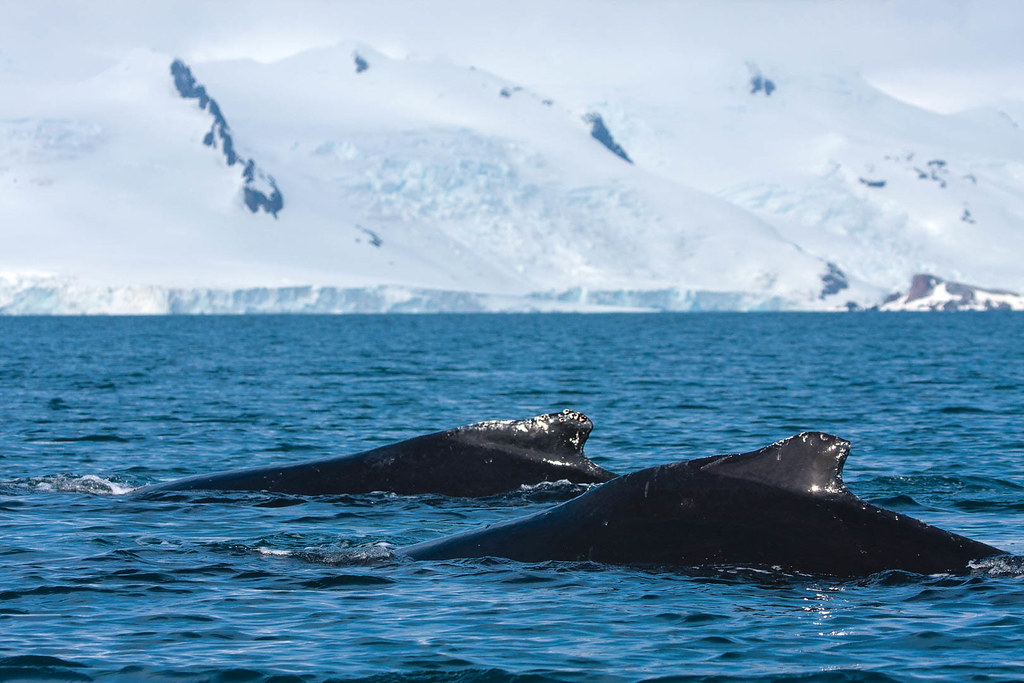日本內閣官房長官菅義偉在2018年最後一週發表書面聲明,宣布日本政府決定退出國際捕鯨委員會(IWC),以在其領海和專屬經濟區內恢復商業捕鯨活動。
如果一切按計劃進行,日本在IWC的65年會員資格將於2019年6月30日結束,日本可在2019年7月1日之後的任何時間在自家水域商業捕鯨。
稱「海盜捕鯨國」 IWC嚴厲譴責日方退出
日本此舉是否會能幫助鯨族群從幾個世紀的商業捕鯨中恢復,保育人士抱持不同意見。
「如果日本繼續這個計畫,它將成為第一個不顧IWC職權,從事商業捕鯨的海盜捕鯨國,」IWC觀察員、智利非營利組織鯨豚保育中心(Centro de Conservacion Cetacea」的執行主任卡布雷拉(Elsa Cabrera)警告。
卡布雷拉說,不該允許日本這麼做。她說:「日本必須為此付出極高代價,才能阻止其他國家效仿這種蔑視國際法規則的行為。」
世界鯨肉主要市場 日本人平均年食用約5000噸
IWC由89個成員國政府組成,成立於1946年,旨在保護鯨和管理世界各地的捕鯨活動。1986年IWC禁止商業捕鯨。
根據禁令,以科學為目的捕鯨是可以豁免的。而日本被指控使用該豁免掩護商業捕鯨。捕鯨者提供鯨魚的身體部位給研究人員,並將鯨肉賣到市場供人食用。
雖然日本是全世界鯨肉的主要市場,但消費量有限。根據非營利組織動物福利研究所(Animal Welfare Institute)和監測國際野生生物犯罪的環境調查機構(Environmental Investigation Agency)的報告,日本人平均每人每年僅吃一盎司,整體每年平均吃4000至5000噸。
南冰洋鯨魚保護區最後一捕 日本滿載歸國
日本本州島西端的城市下關,3月下旬慶祝捕鯨船隊返航。工作船(factory ship)日新丸號(Nisshin Maru)裝滿了333隻南極小鬚鯨的肉。
菅義偉國務卿宣布日本退出IWC時,捕鯨船已經出海了,所以上一季是日本捕鯨船在南冰洋鯨魚保護區的最後一個捕鯨季節。
IWC禁止南冰洋鯨魚保護區內所有類型的商業捕鯨活動。多年來,國際非營利組織海洋牧者(Sea Shepherd)在該保護區對抗日本捕鯨船。2002年日本開始在南極水域探查,並在2005年至2017年從事捕鯨活動。
這段期間,在海洋牧者的干擾之下,超過6000隻鯨魚逃過日本商業捕鯨船的魚叉。
2017年,日本政府開始投入數百萬美元反制海洋牧者的安全工作,包括軍用級即時監控設備。雖然這讓海洋牧者在2018年都無法進入南冰洋,但也迫使日本在安全方面投入了大量資源,提高了成本。

南半球捕鯨告終 重點戰場轉向北半球
海洋牧者創辦人華森(Paul Watson)上尉說:「我們很高興南冰洋鯨保護區捕鯨活動結束。我們很快就會有南大西洋鯨魚保護區,我們將繼續對抗挪威、日本和冰島這三個僅剩的海盜捕鯨國。「合法捕鯨已經結束,剩下的工作就是掃除海盜。」
華森指出,日本退出IWC後,IWC內有關南大西洋鯨魚保護區的提案隨即成功在望,有效終結南半球捕鯨活動。
「南冰洋的捕鯨戰爭將很快就要結束,現在的重點要放在北半球。」華森說。
動物福利研究所表示,樂見日本停止在南極從事高補貼的商業補鯨活動,南極許多鯨類已經被商業開發影響超過一個世紀。「我們希望菅義偉表示將遵守國際法的意思是,承認在北太平洋公海捕塞鯨是違反華盛頓的行為,並將停止這麼做。」
菅義偉宣布日本「將停止在南半球和南冰洋捕鯨,並將只在日本自家專屬和經濟海域捕鯨」,但沒有明確說出數量和物種。
Japan’s Chief Cabinet Secretary, Yoshihide Suga, issued a written statement in the last week of 2018 announcing the government’s decision to withdraw from the International Whaling Commission, IWC, in order “to resume commercial whaling” within its territorial waters and exclusive economic zone up to 200 miles offshore.
If all goes according to plan, Japan’s 65-year membership in the IWC will end on June 30, and Japan has given itself permission to resume commercial whaling operations in its own waters anytime after July 1, 2019.
Whale conservationists differ on whether the Japanese move will help whales recover from centuries of commercial whaling or not.
“If Japan continues with its plan, it will become the first pirate whaling nation that kills whales for commercial purposes outside the competence of the IWC,” warns Elsa Cabrera, executive director of the Chilean nonprofit Centro de Conservacion Cetacea, accredited observer to the IWC since 2001.
Cabrera says Japan should not be allowed to get away with the move. “The costs associated to this conduct should be high enough to discourage Japan as well as to prevent other countries from following this alarming example of contempt to the rules of international law,” she said.
The International Whaling Commission, with 89 member governments, was established in 1946 to conserve whales and manage whaling around the world. It imposed a ban on commercial whaling in 1986.
Under the ban, whaling for scientific purposes is exempt. Japan has been accused of using that exemption as a cover for commercial whaling. Whalers would supply some whale body parts to researchers and sell whale meat to markets for human consumption.
Although Japan is the world’s main market for whale meat, consumption there is limited. Japanese people eat an average of about an ounce per person per year, or a total of between 4,000 and 5,000 tons annually, according to a report by the Animal Welfare Institute, a nonprofit that seeks to ease animal suffering, and the nonprofit Environmental Investigation Agency, which monitors international wildlife crime.
Shimonoseki, on the western tip of Japan’s main island of Honshu, celebrated the return of the whaling fleet late in March. The factory ship, Nisshin Maru, was loaded with the meat from 333 Antarctic minke whales.
The whalers were already out at sea when Secretary Suga announced Japan’s withdrawal from the IWC, so this past season is supposed to be the last that Japanese whalers hunt in the Southern Ocean Whale Sanctuary, where the International Whaling Commission has banned all types of commercial whaling.
For years, the international nonprofit organization Sea Shepherd has fought Japanese whaling operations in the Southern Ocean Whale Sanctuary, with expeditions to Antarctic waters from the first one in 2002, followed by continuous campaigns from 2005 until 2017.
During this period, due to Sea Shepherd interventions over 6,000 whales were saved from the harpoons of Japanese commercial whalers posing as research whalers.
In 2017, the Japanese government began to invest millions of dollars in security efforts to prevent Sea Shepherd from engaging their fleets. These security measures included military grade, real-time surveillance.
Although this prevented Sea Shepherd ships from returning to the Southern Ocean in 2018, it also placed Japan in the position of expending huge resources on continuous security. The cost to Japan of preventing Sea Shepherd intervention became very expensive.
With Japan’s announcement, Sea Shepherd says the group’s objective of ending the slaughter of whales in the Southern Ocean Whale Sanctuary has been realized. “This is a victory for the campaign to make the Southern Ocean a whaling free zone,” the group said in a statement.
Sea Shepherd founder Captain Paul Watson said, “We are delighted to see the end of whaling in the Southern Ocean Whale Sanctuary. We are delighted that we will soon have a South Atlantic Whale Sanctuary and we look forward to continuing to oppose the three remaining pirate whaling nations of Norway, Japan and Iceland. Whaling as a ‘legal’ industry has ended. All that remains is to mop up the pirates.”
When Japan actually withdraws from the International Whaling Commission Watson points out that it will allow the IWC to pass the motion to establish the South Atlantic Whale Sanctuary, effectively ending whaling in the Southern Hemisphere.
“The whale wars in the Southern Ocean will soon be over,” said Watson. “The focus now must be the Northern Hemisphere.”
The Animal Welfare Institute also welcomes Japan permanently ending this heavily subsidized industrial-scale whaling in Antarctica, where many species of whales have endured more than a century of almost nonstop commercial exploitation.
“We hope that Secretary Suga’s statement that Japan’s “whaling will be conducted in accordance with international law” signals Japan’s acceptance that its landing of sei whales taken on the high seas of the North Pacific violates the Convention on the International Trade in Endangered Species of Wild Fauna and Flora and that this hunt will also end.
Secretary Suga announced that Japan will “cease the take of whales in the Antarctic Ocean/the Southern Hemisphere” and “will conduct commercial whaling within Japan’s territorial sea and its exclusive economic zone,” but it does not specify the number of whales or species to be taken.
※ 全文及圖片詳見:ENS








